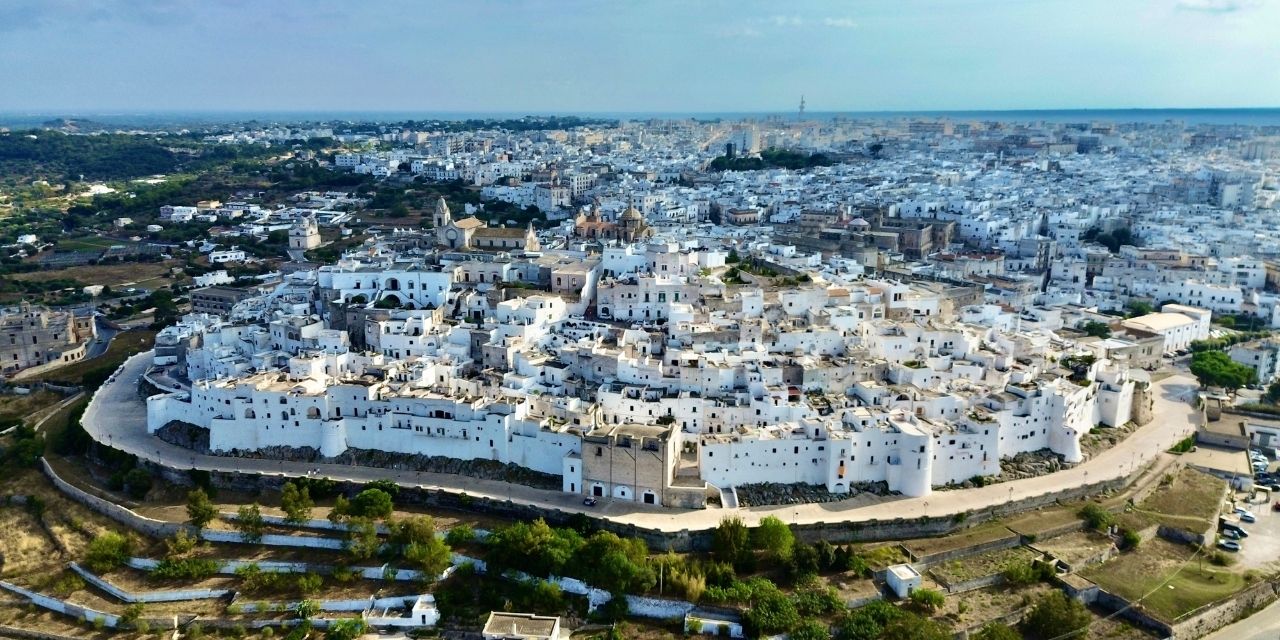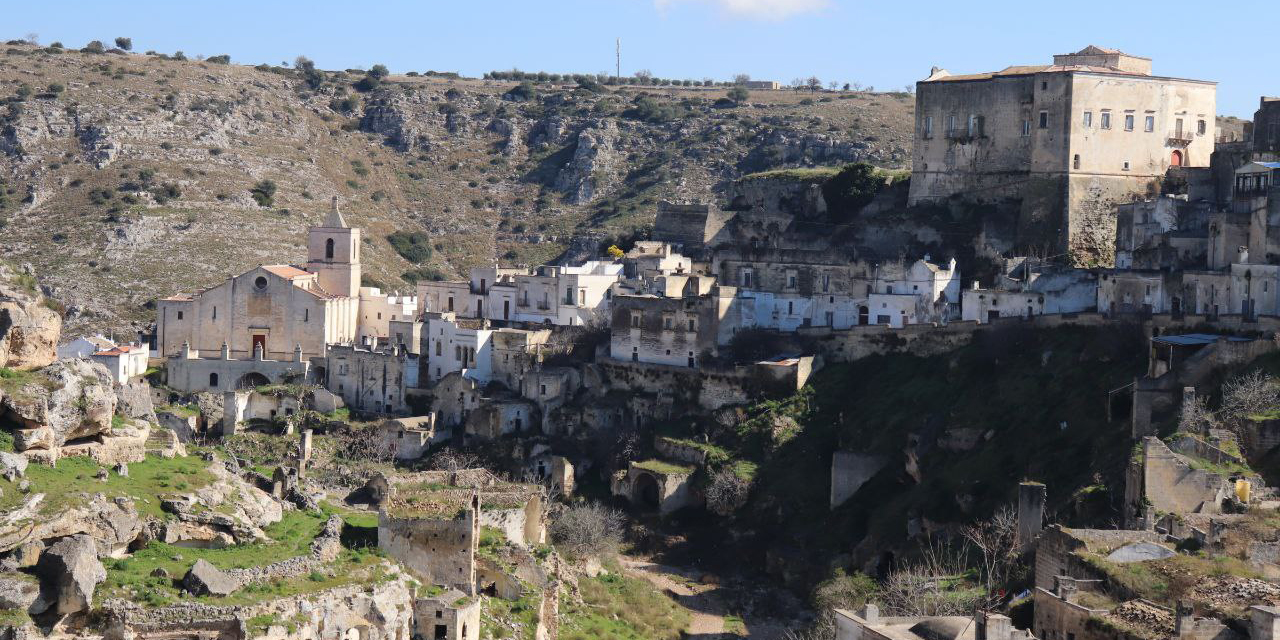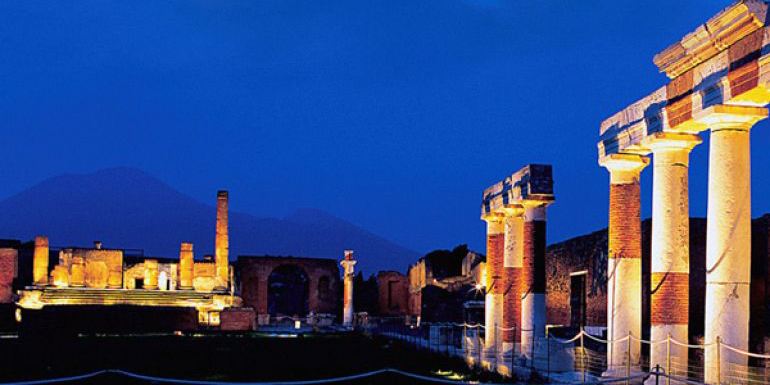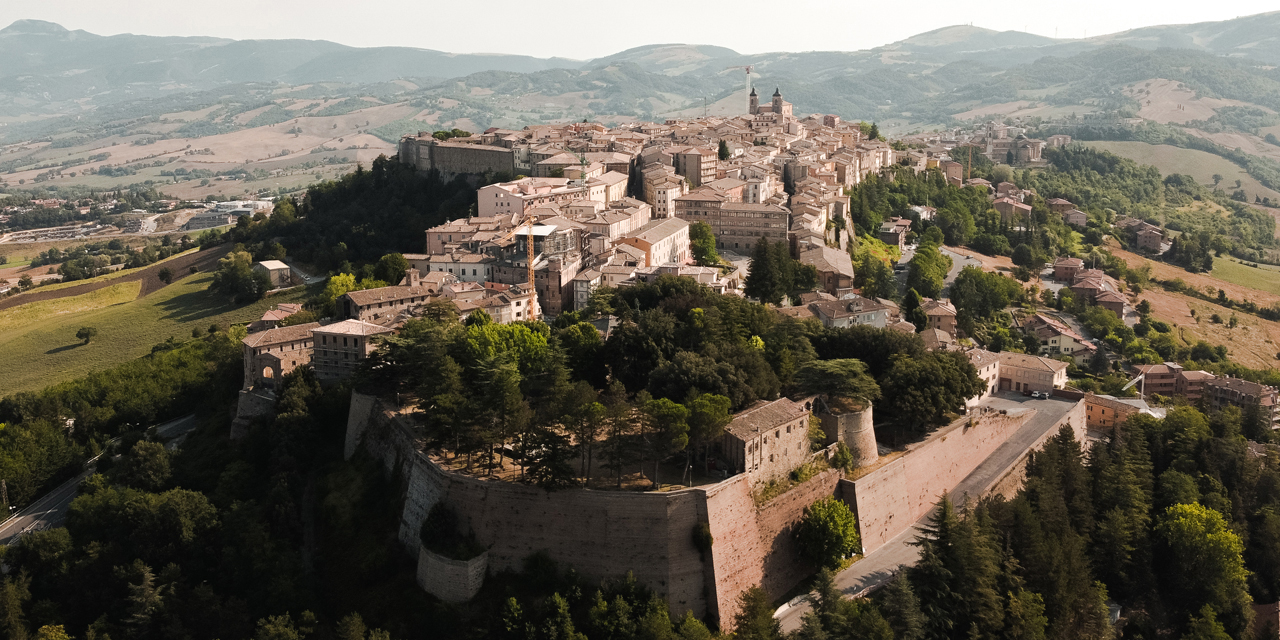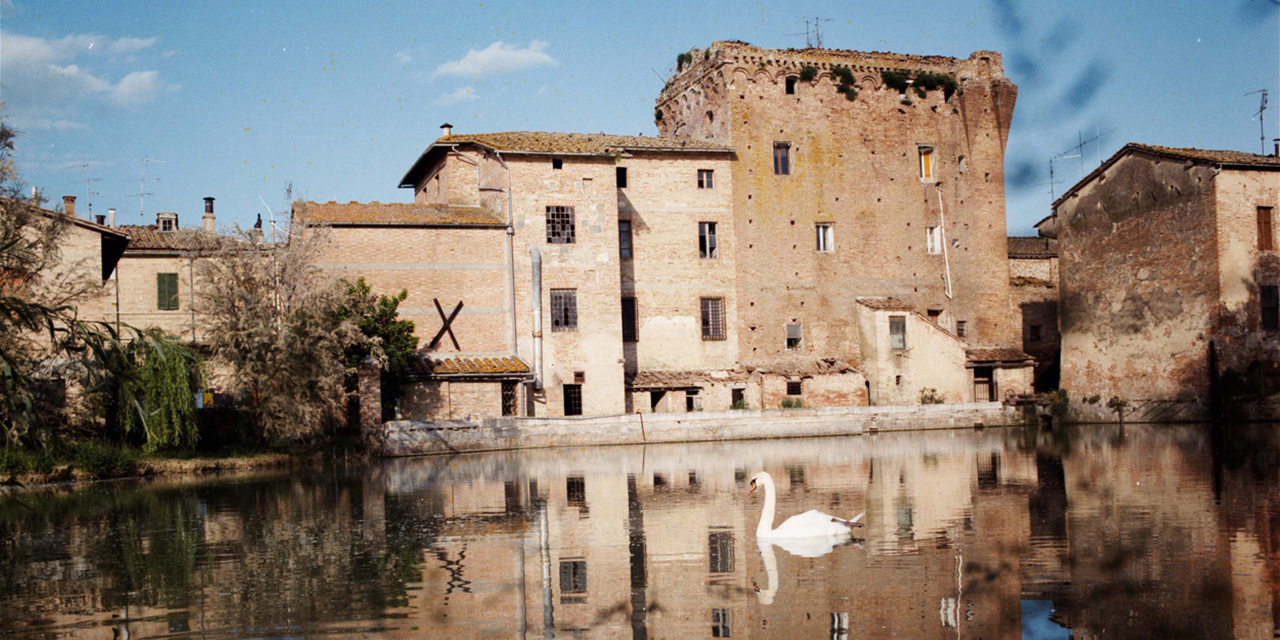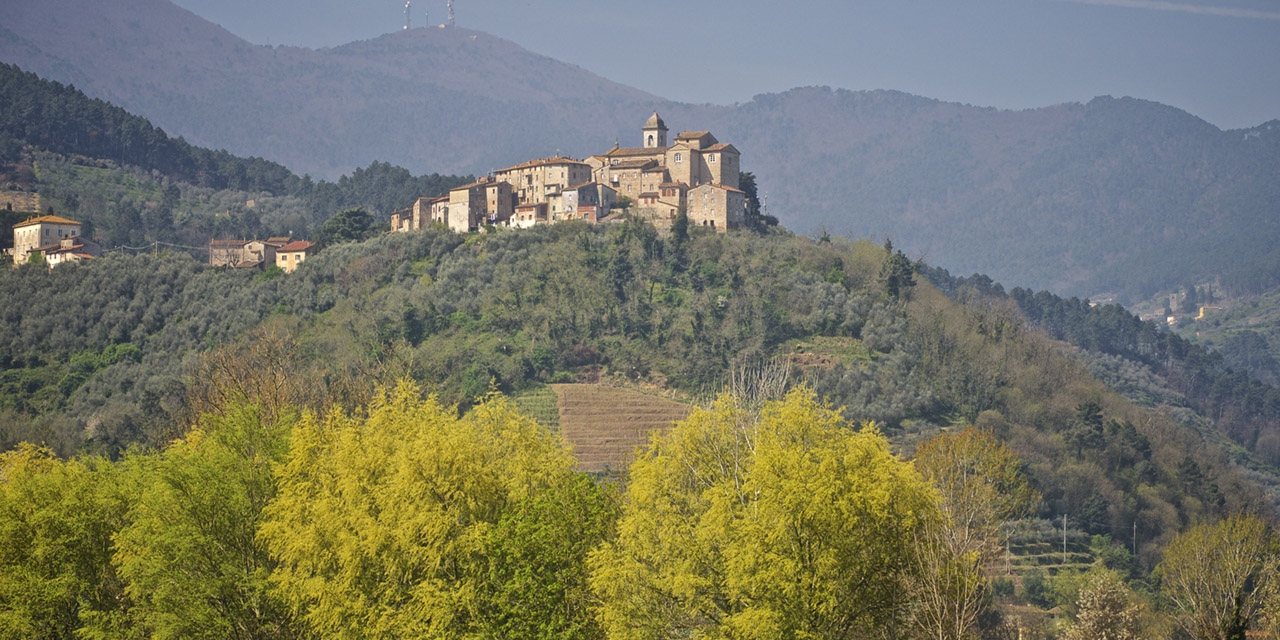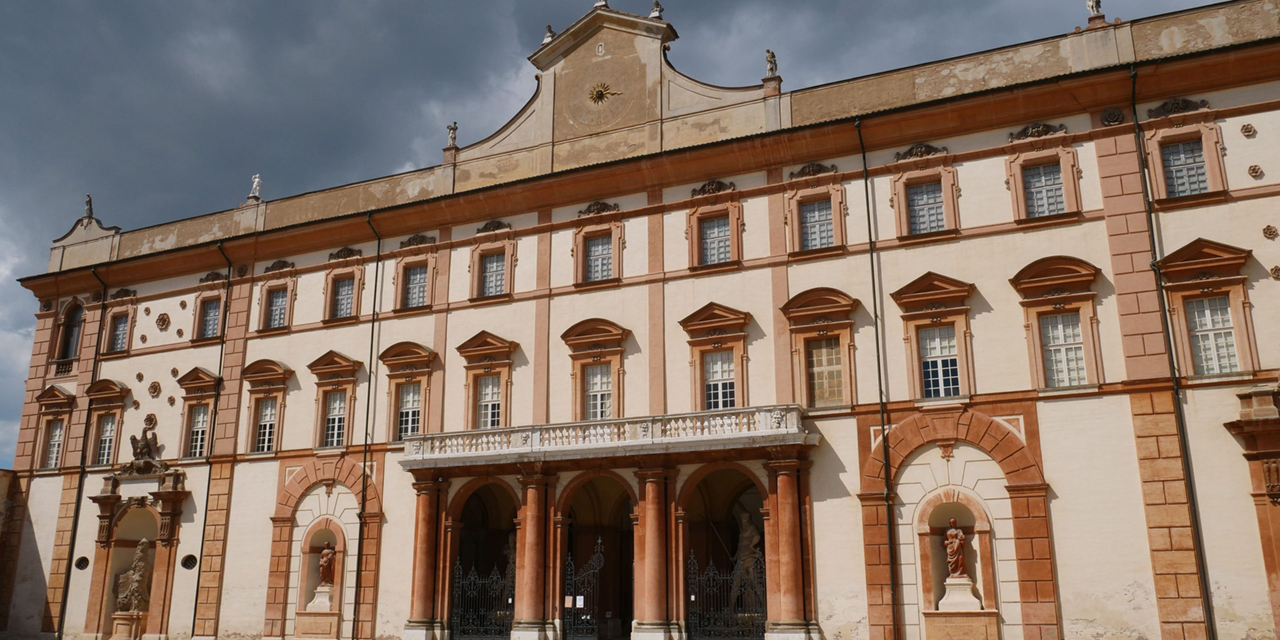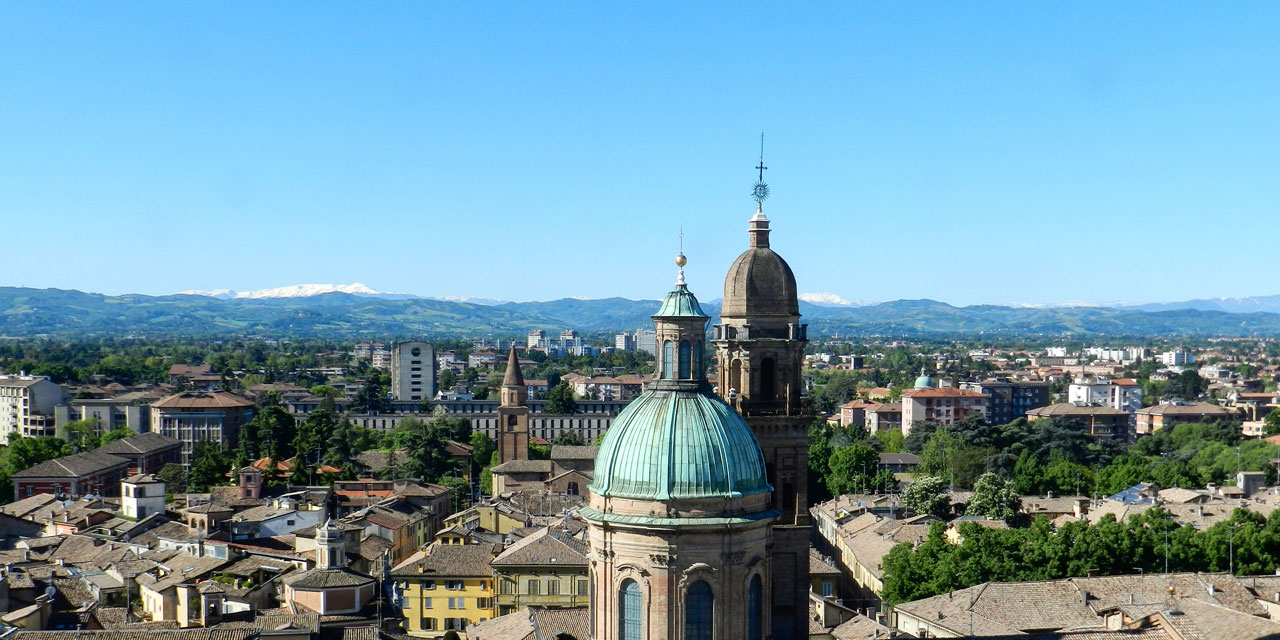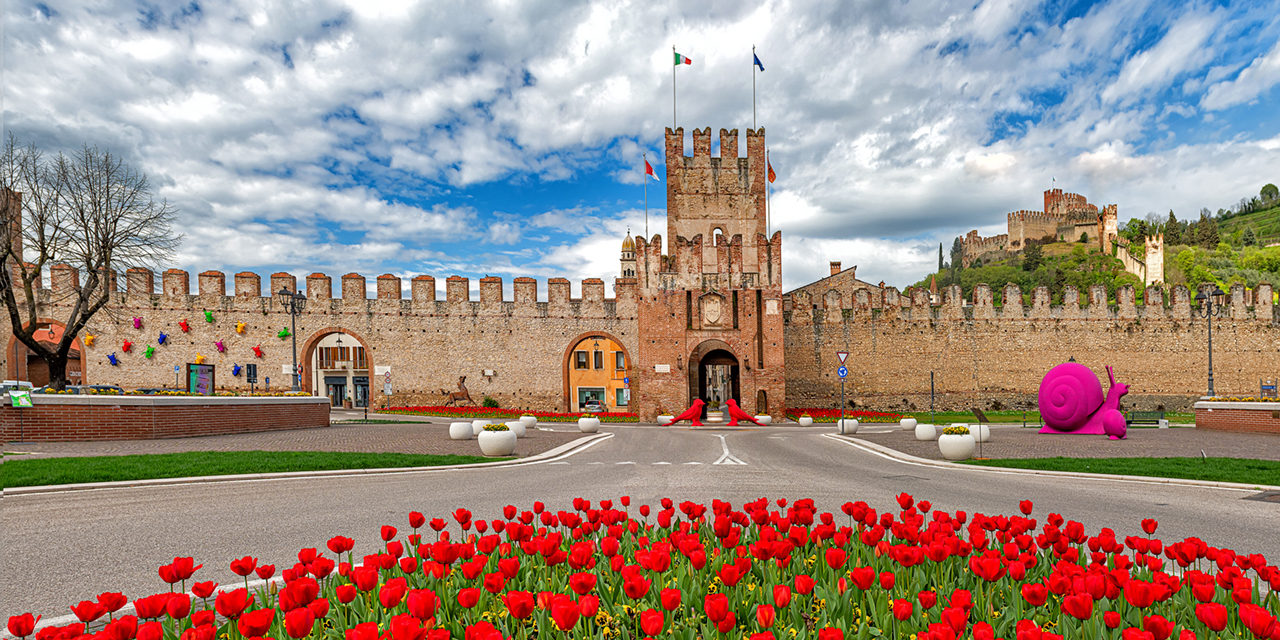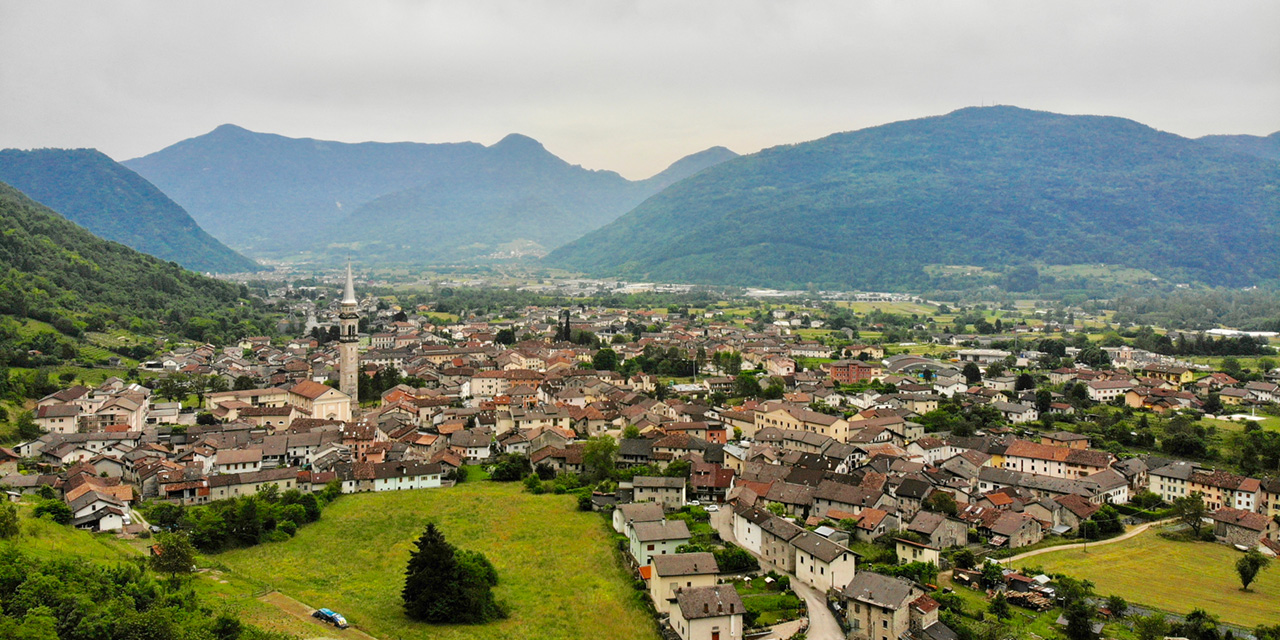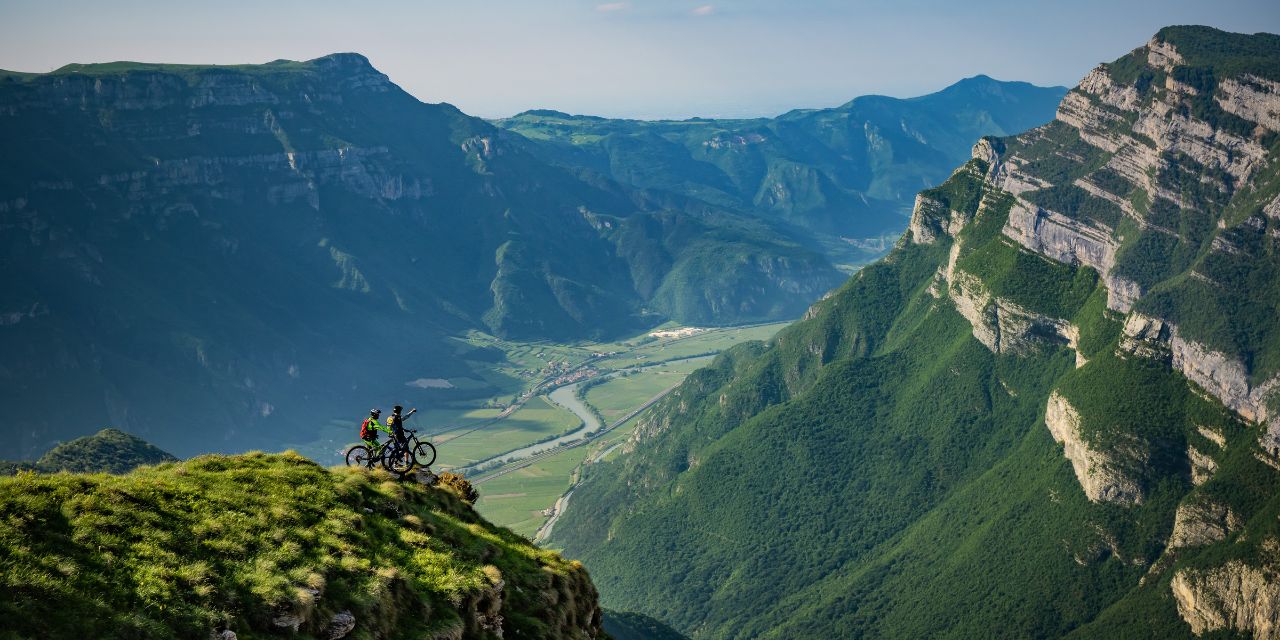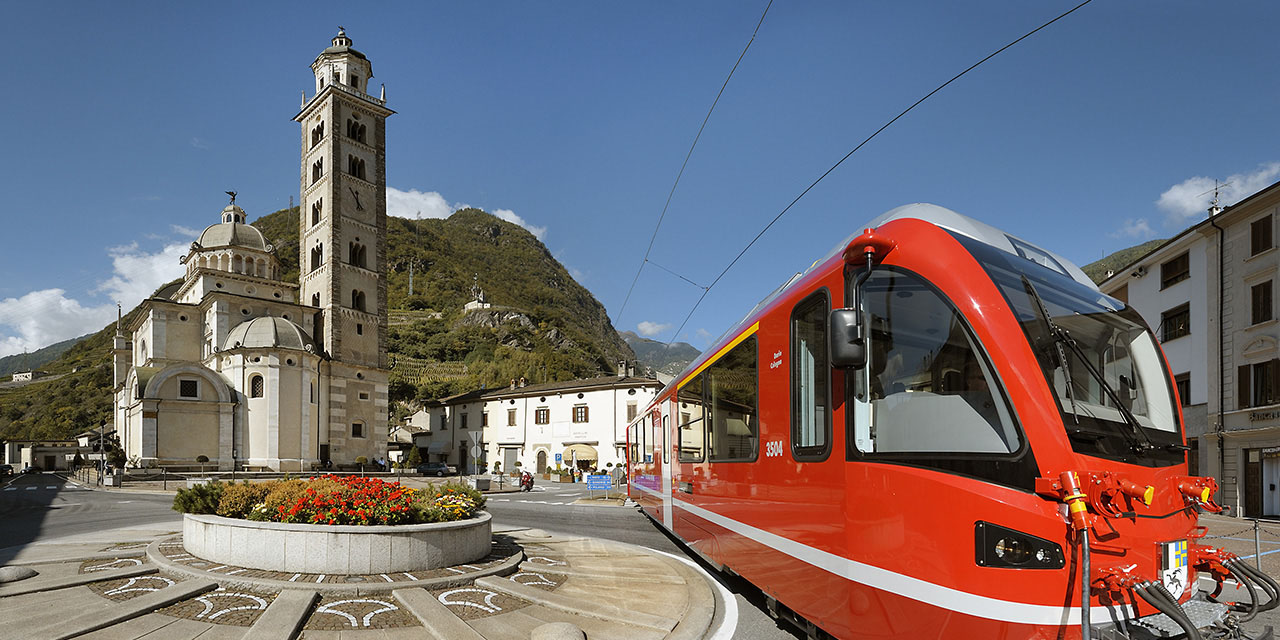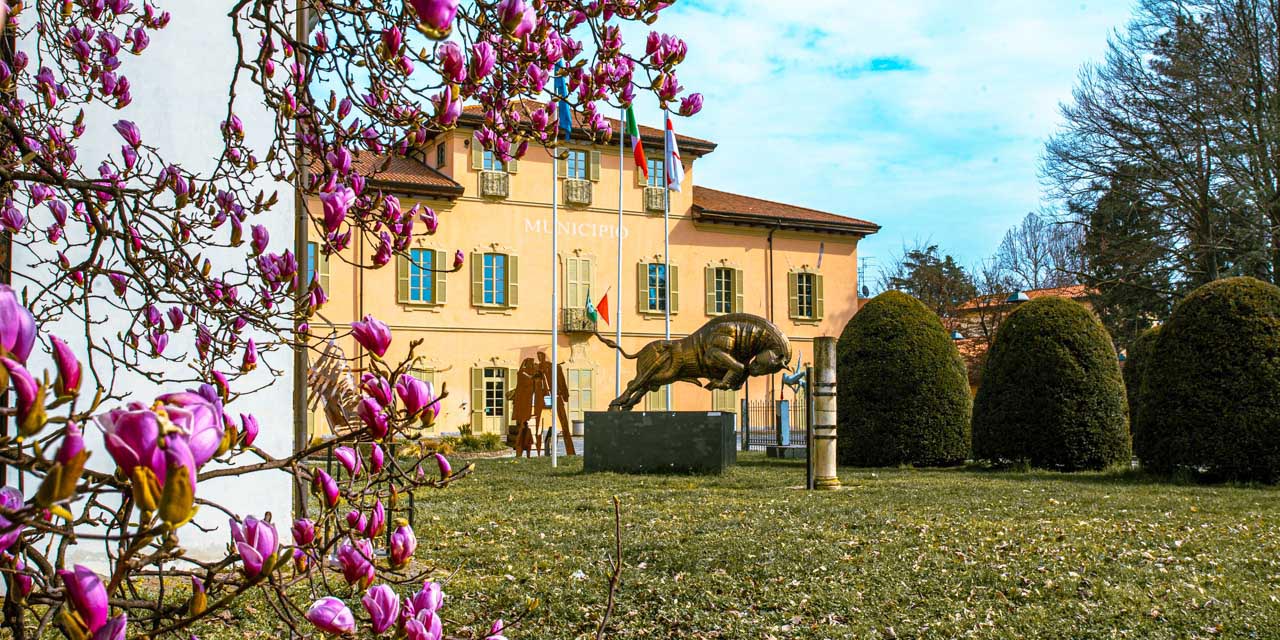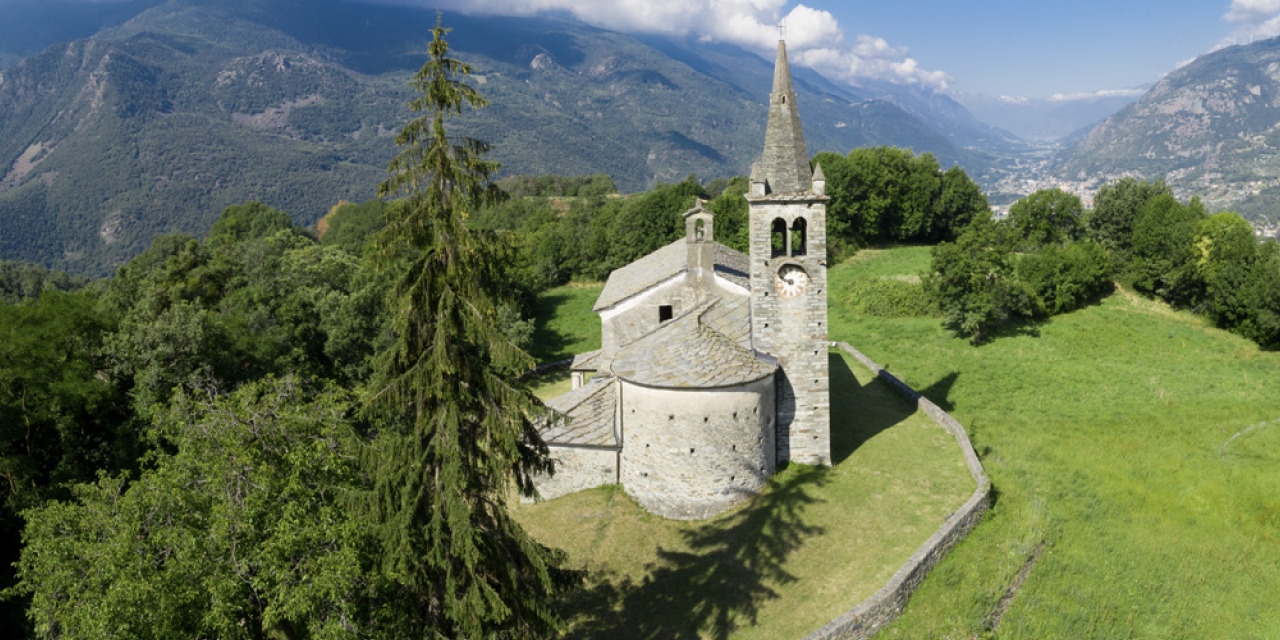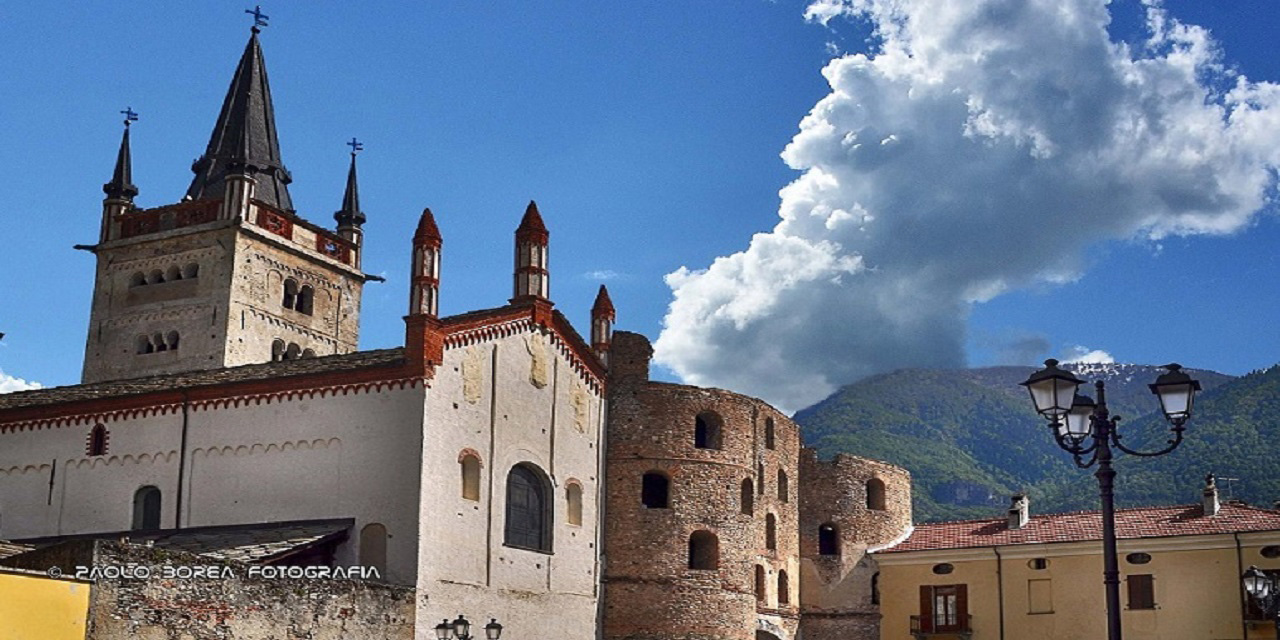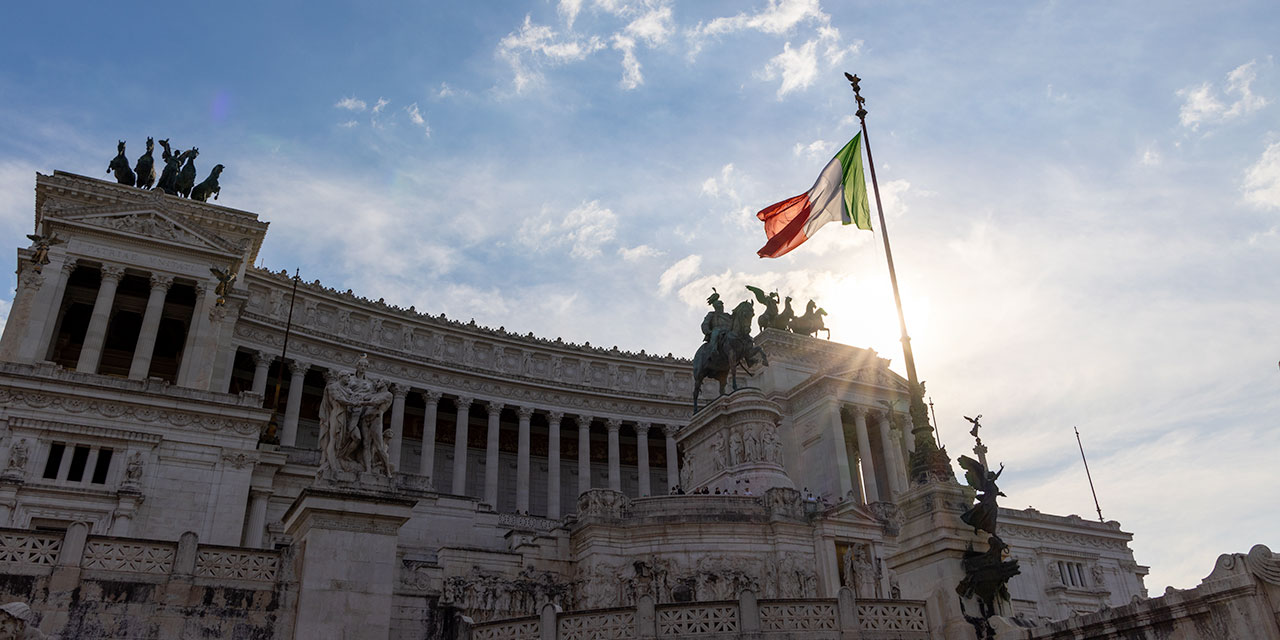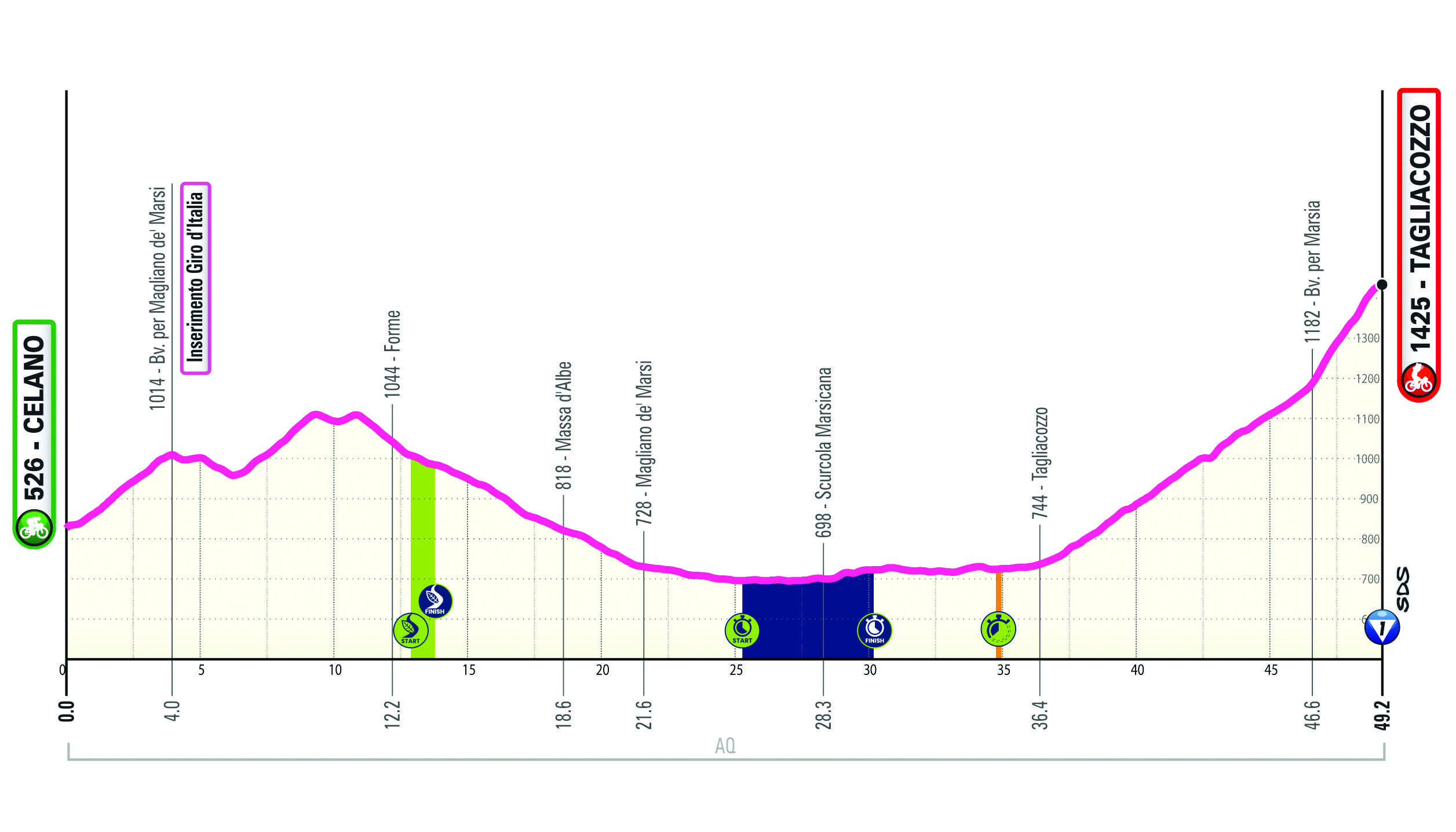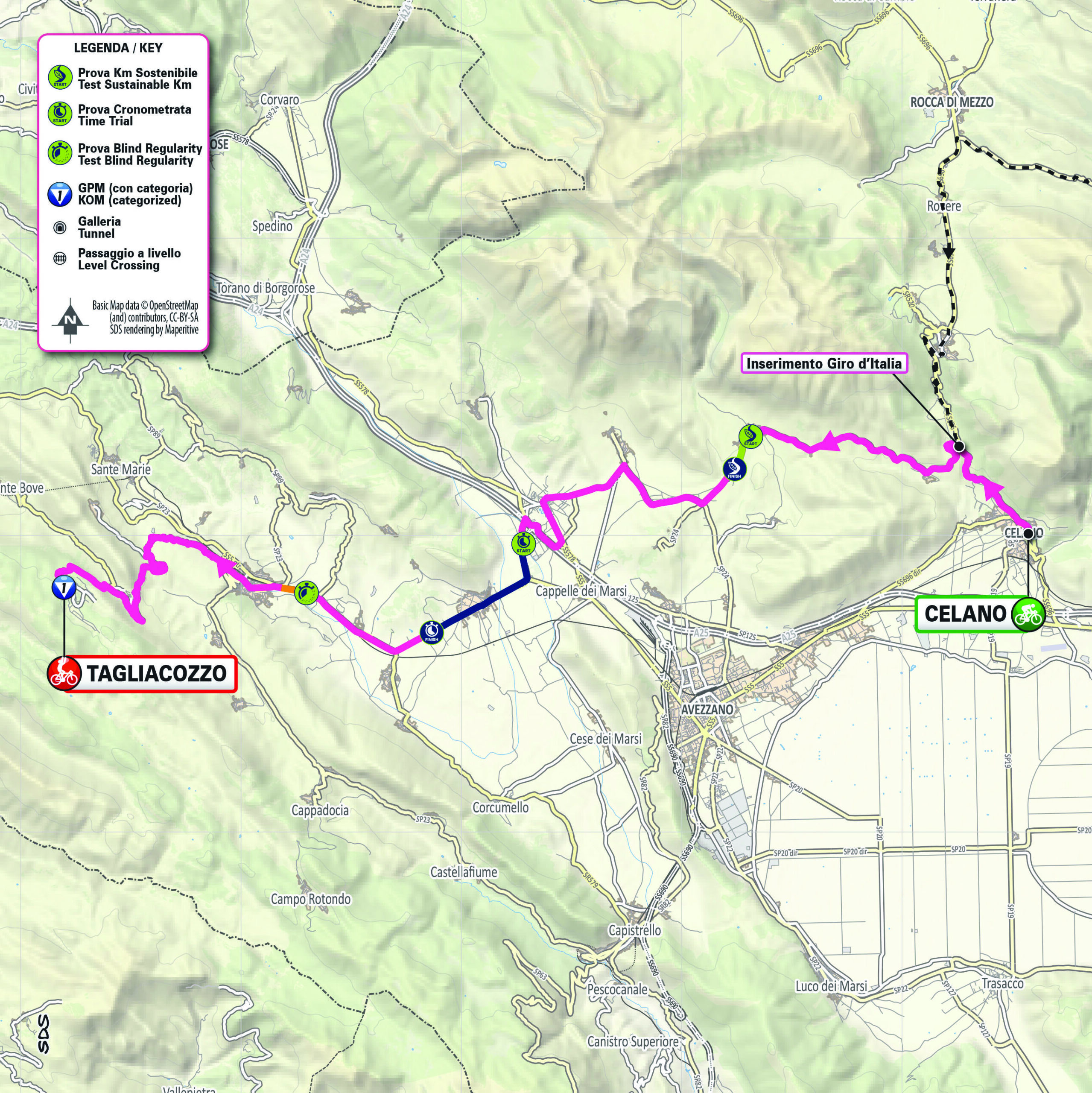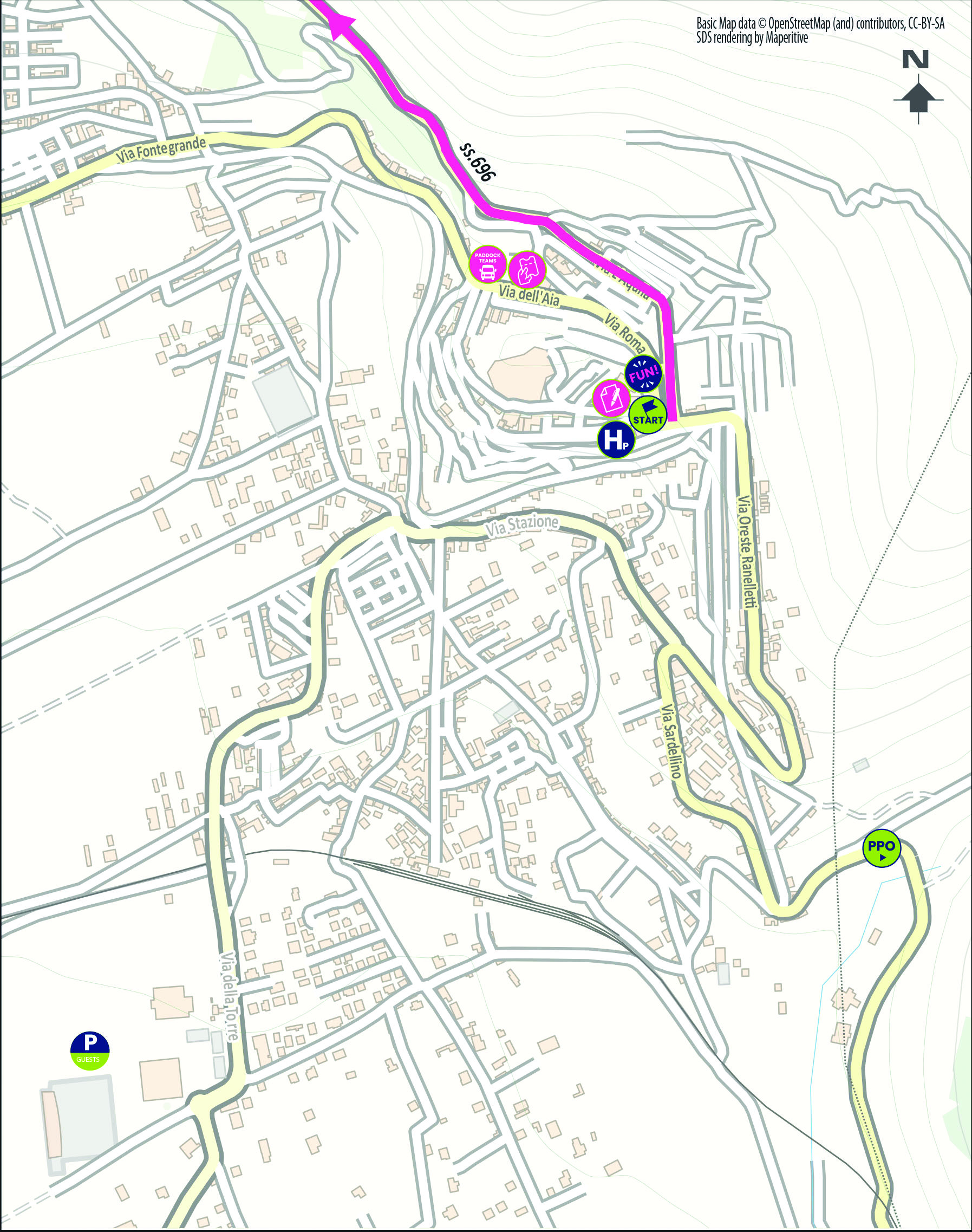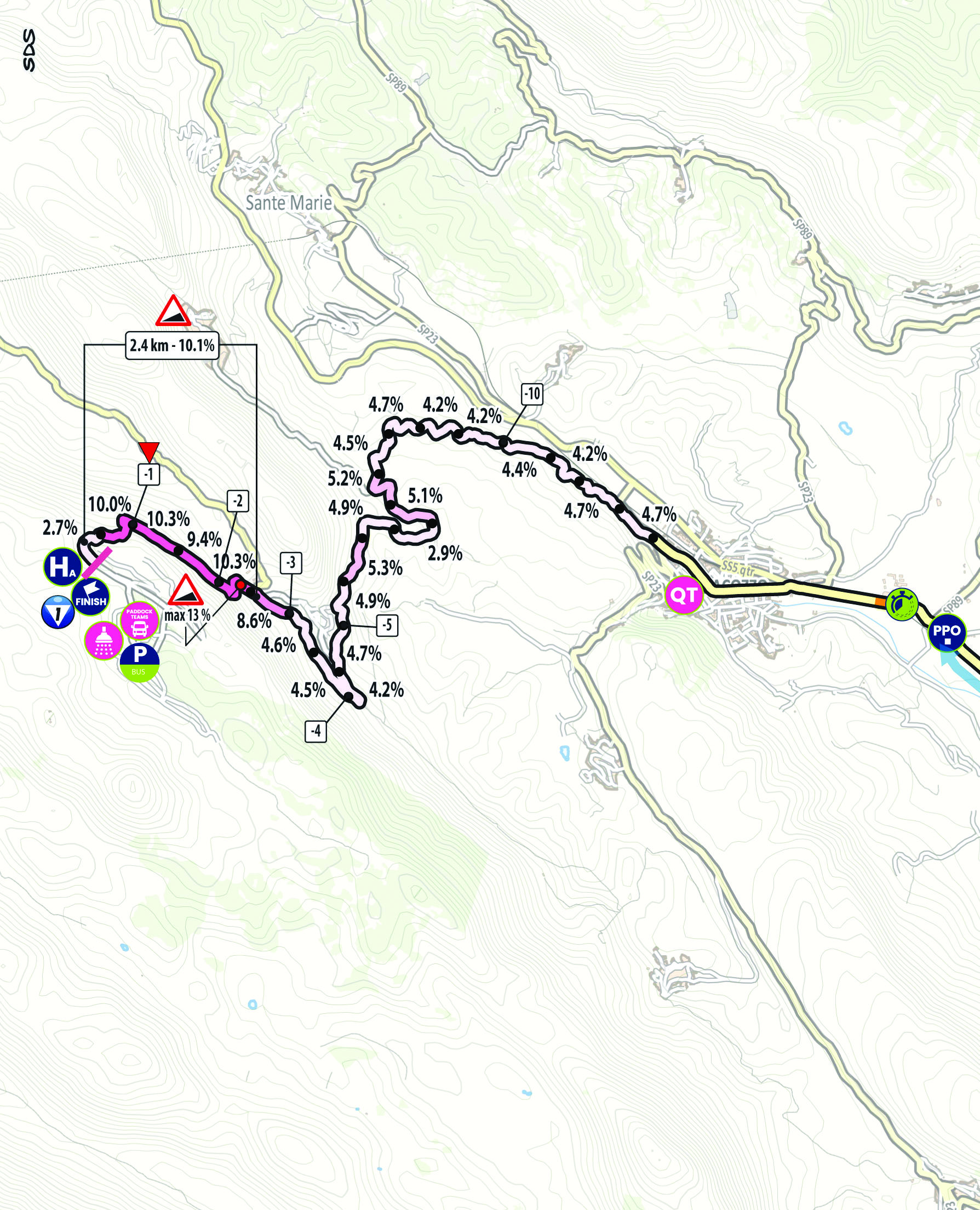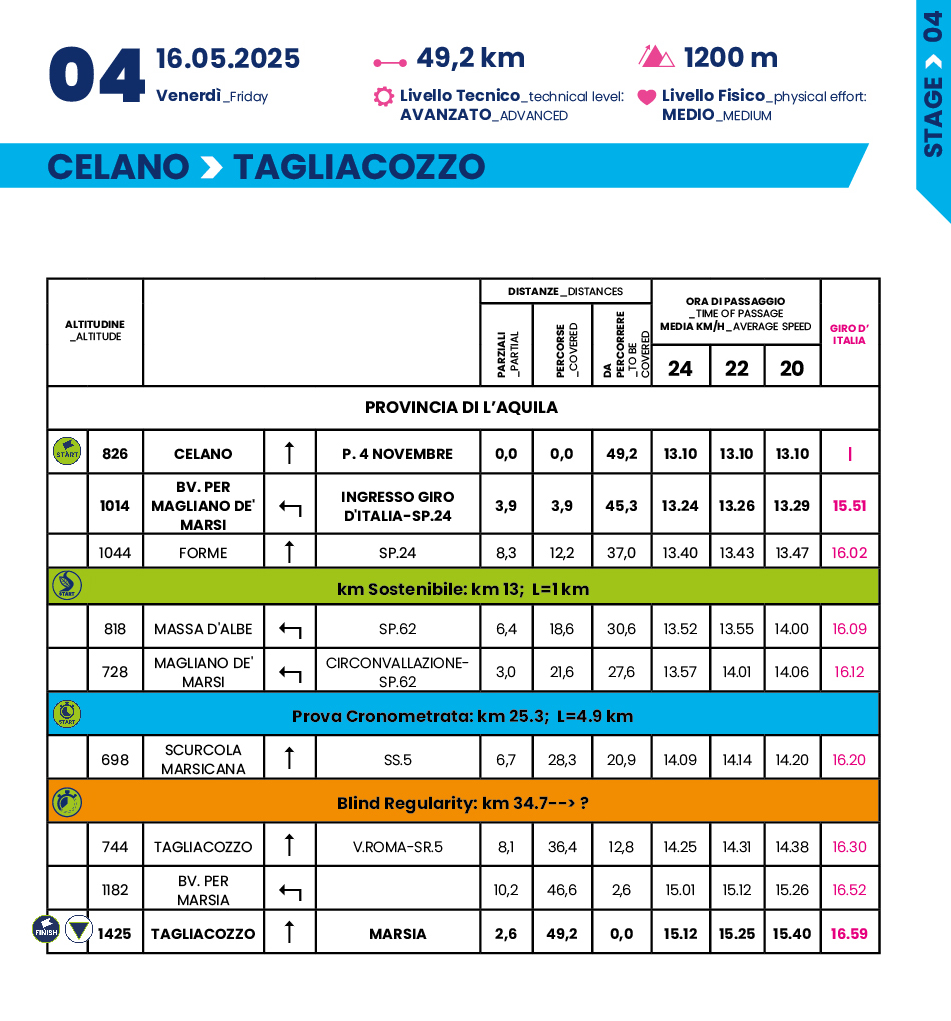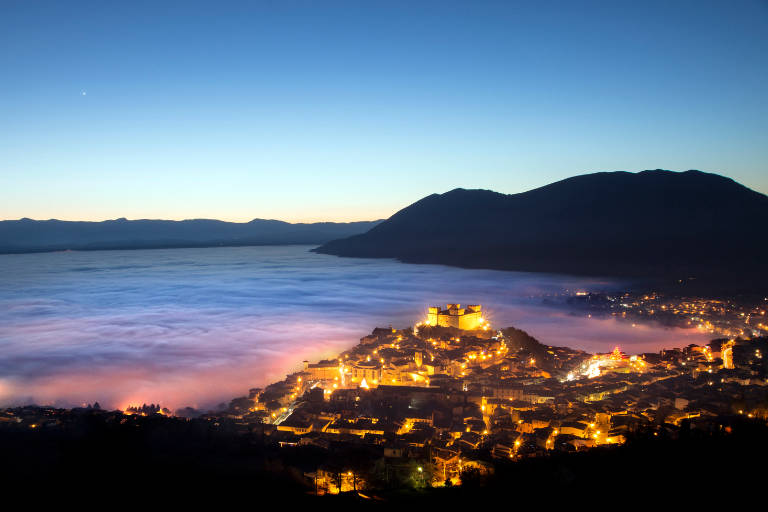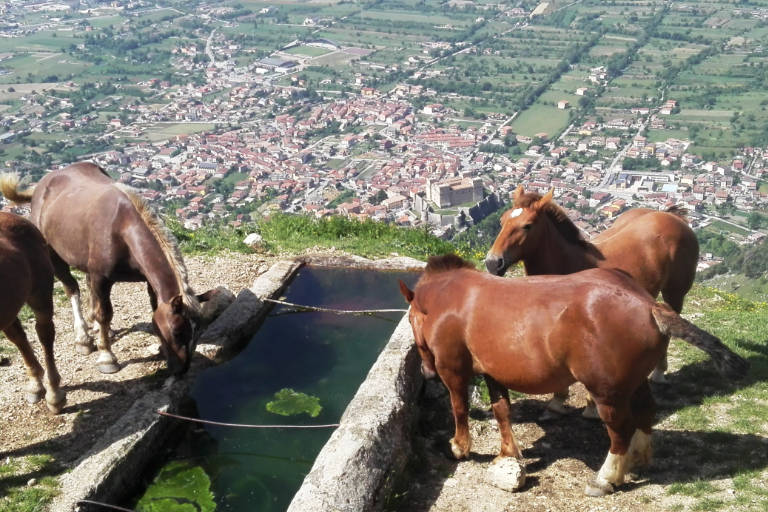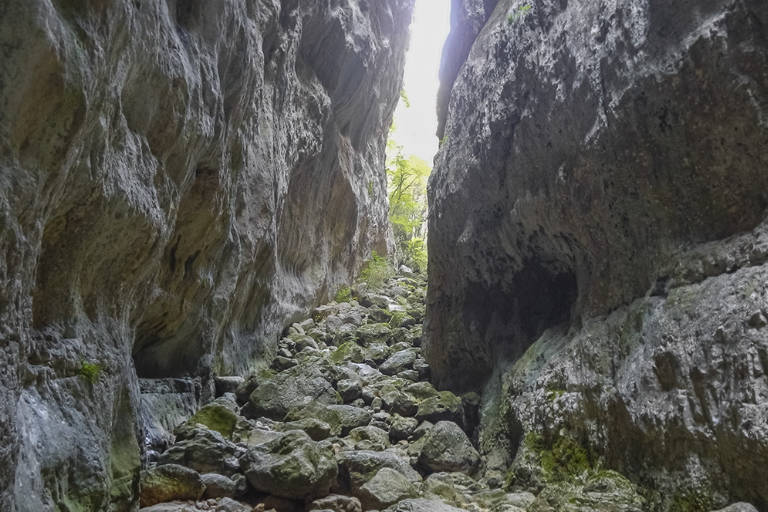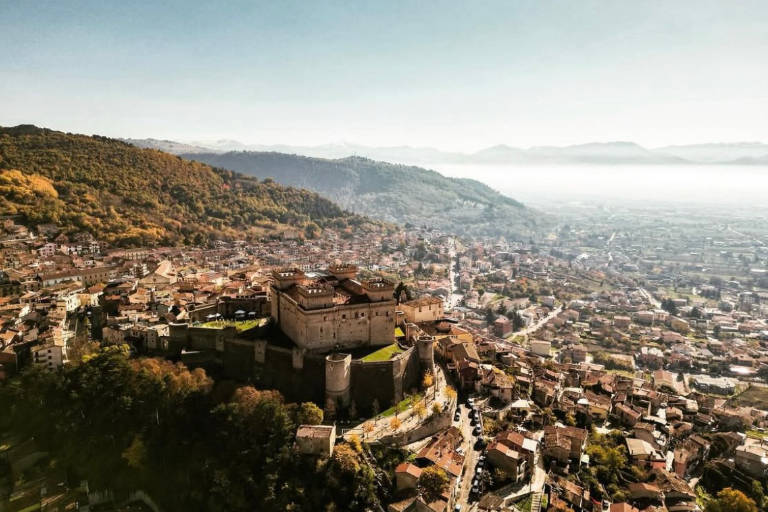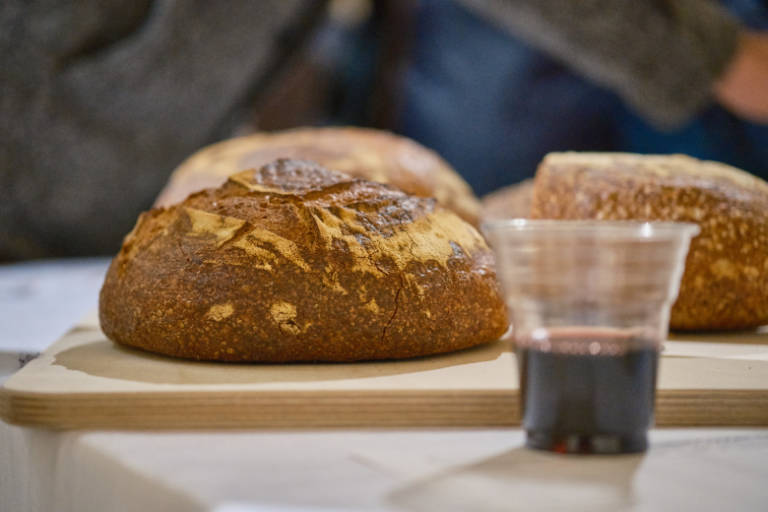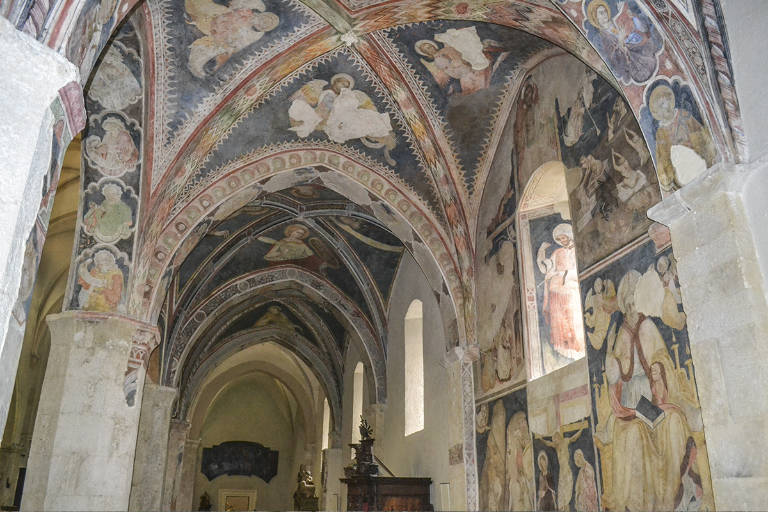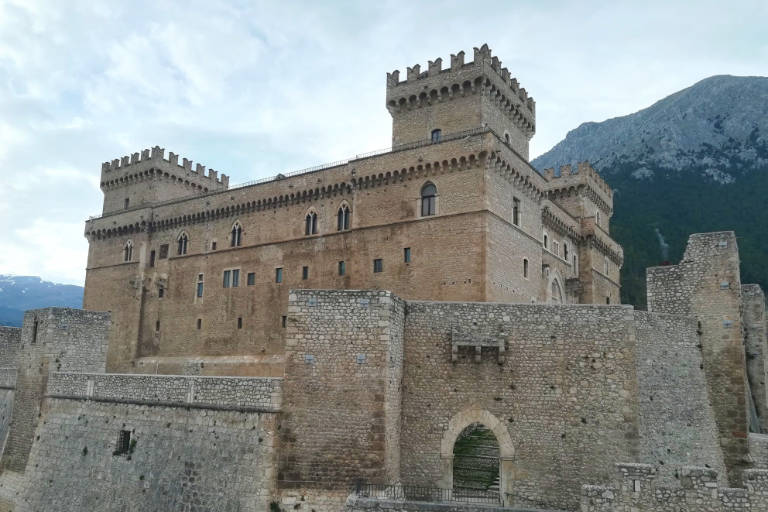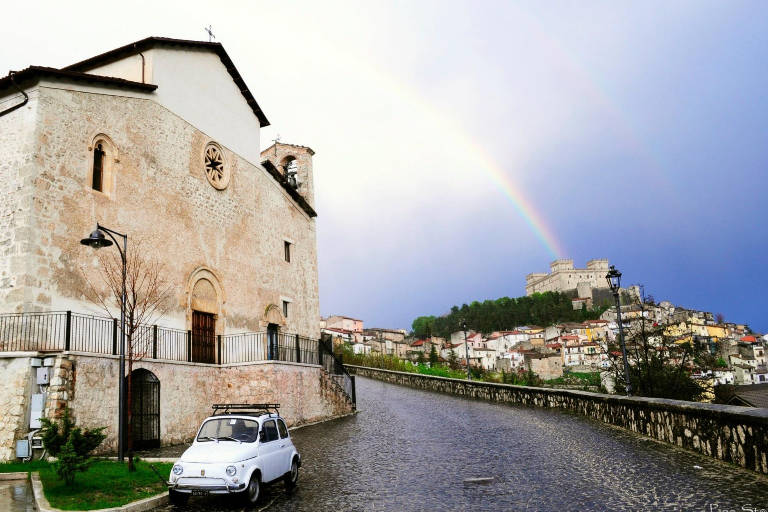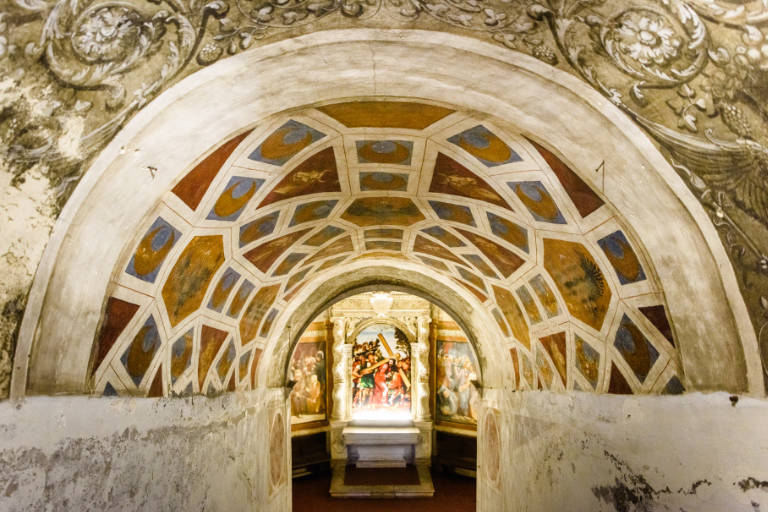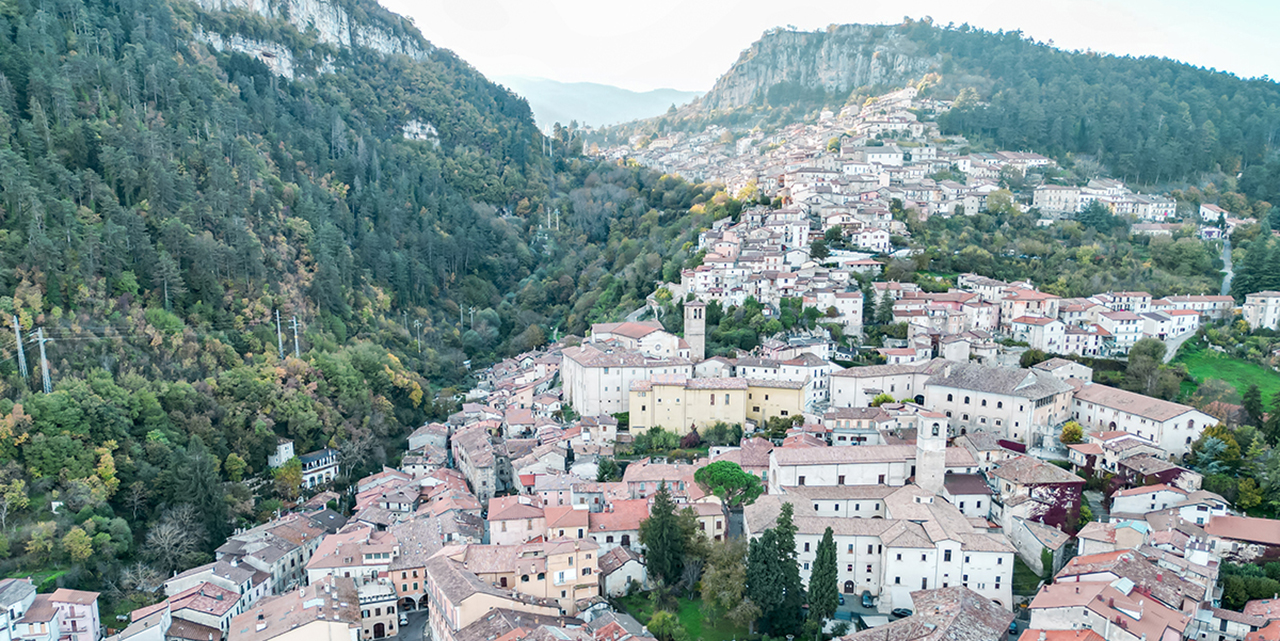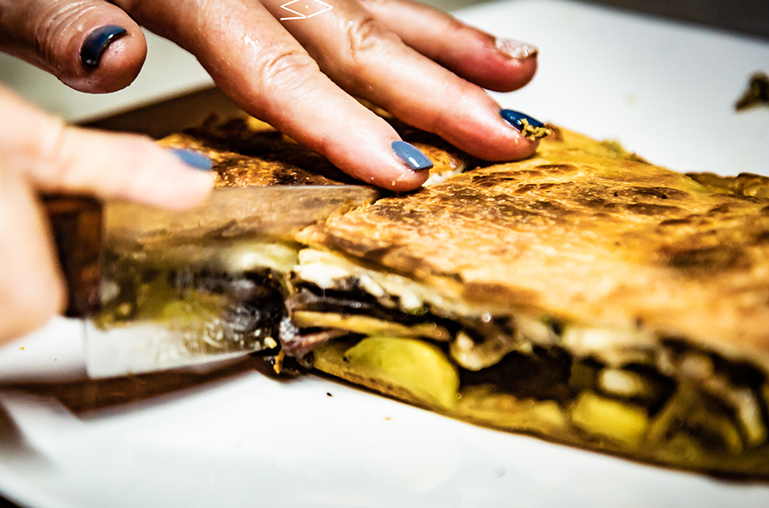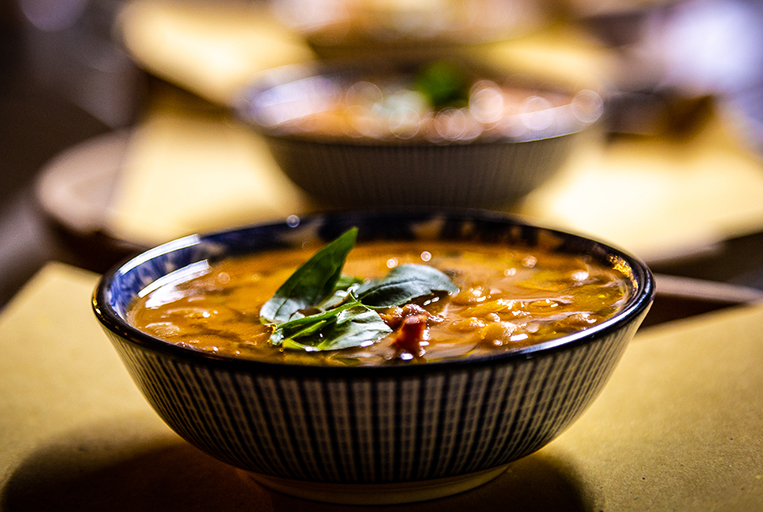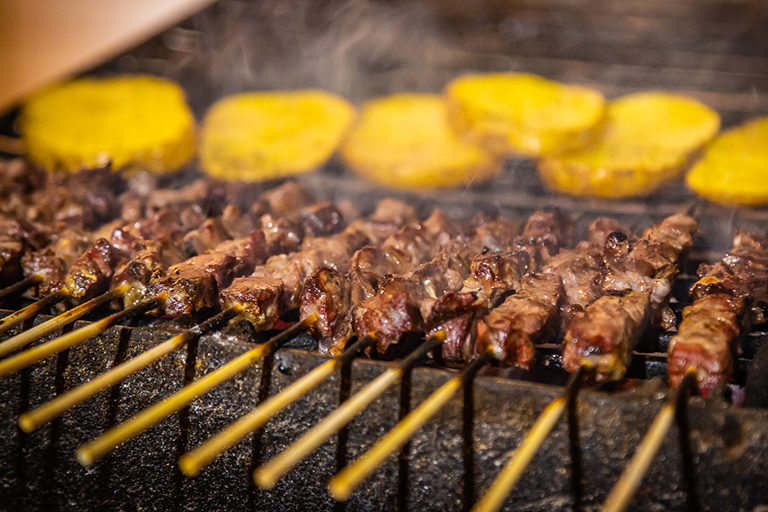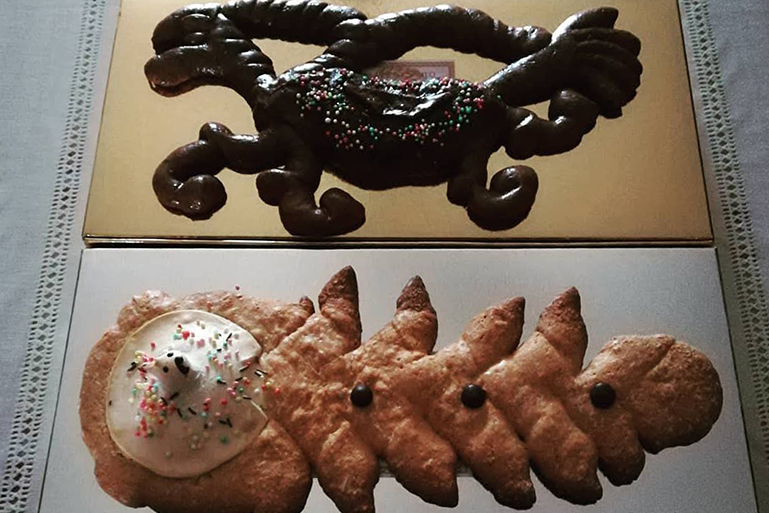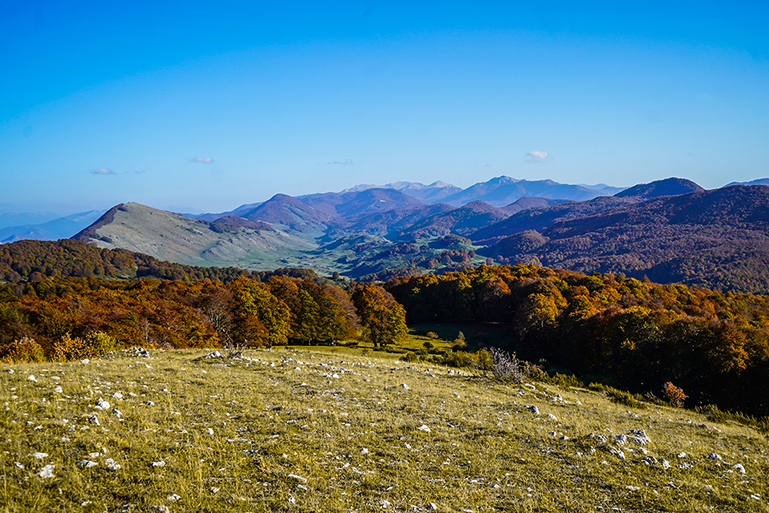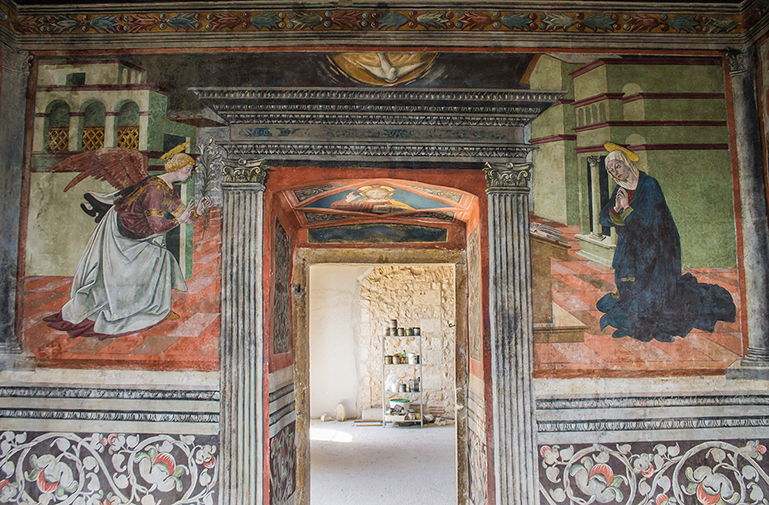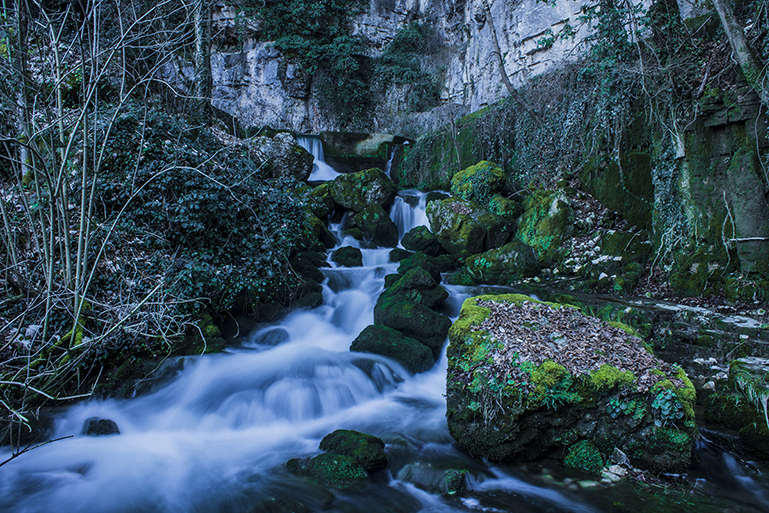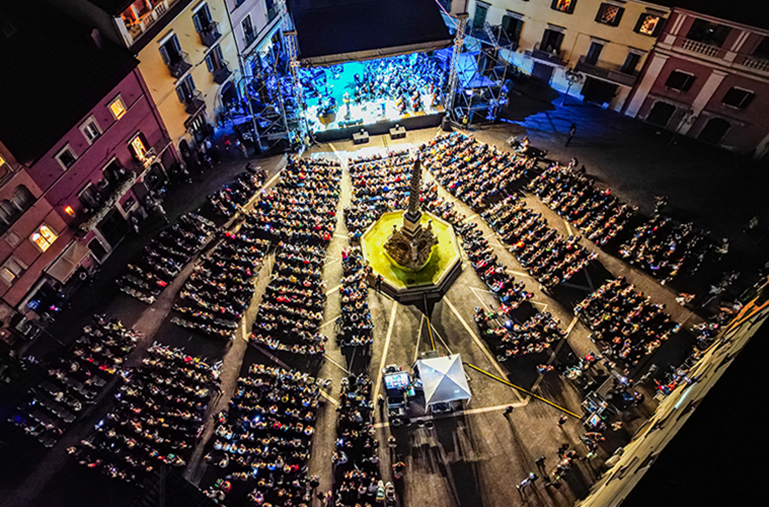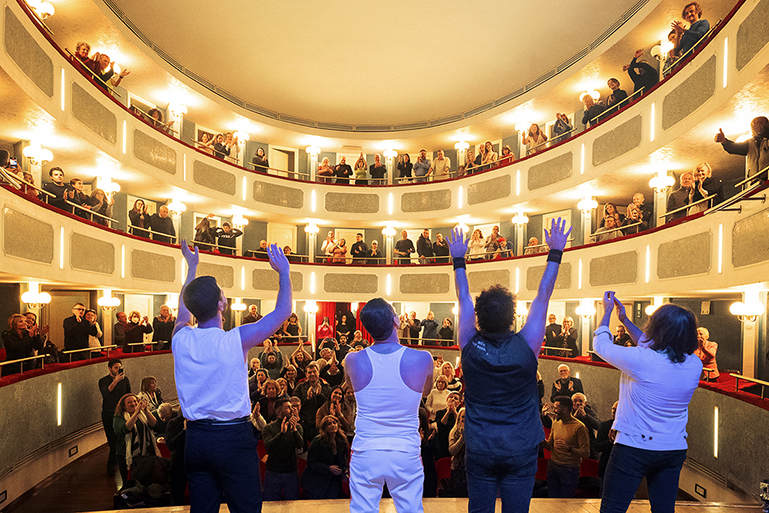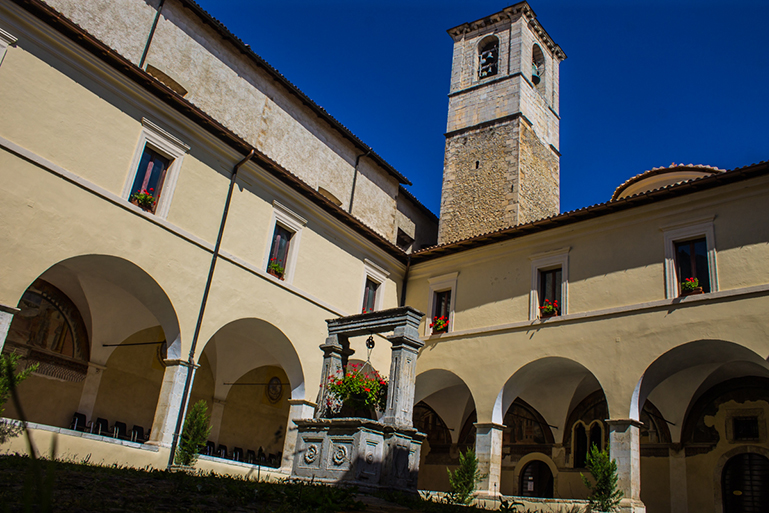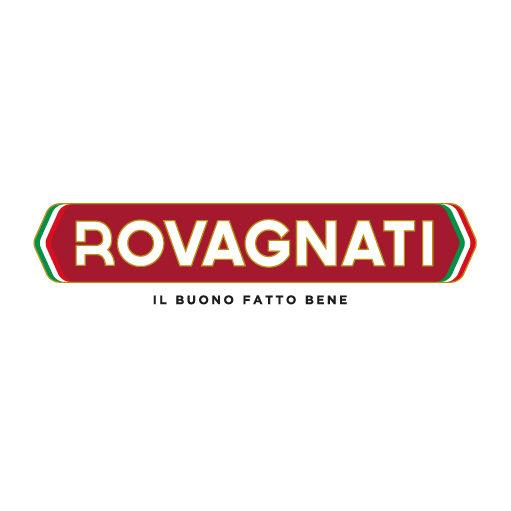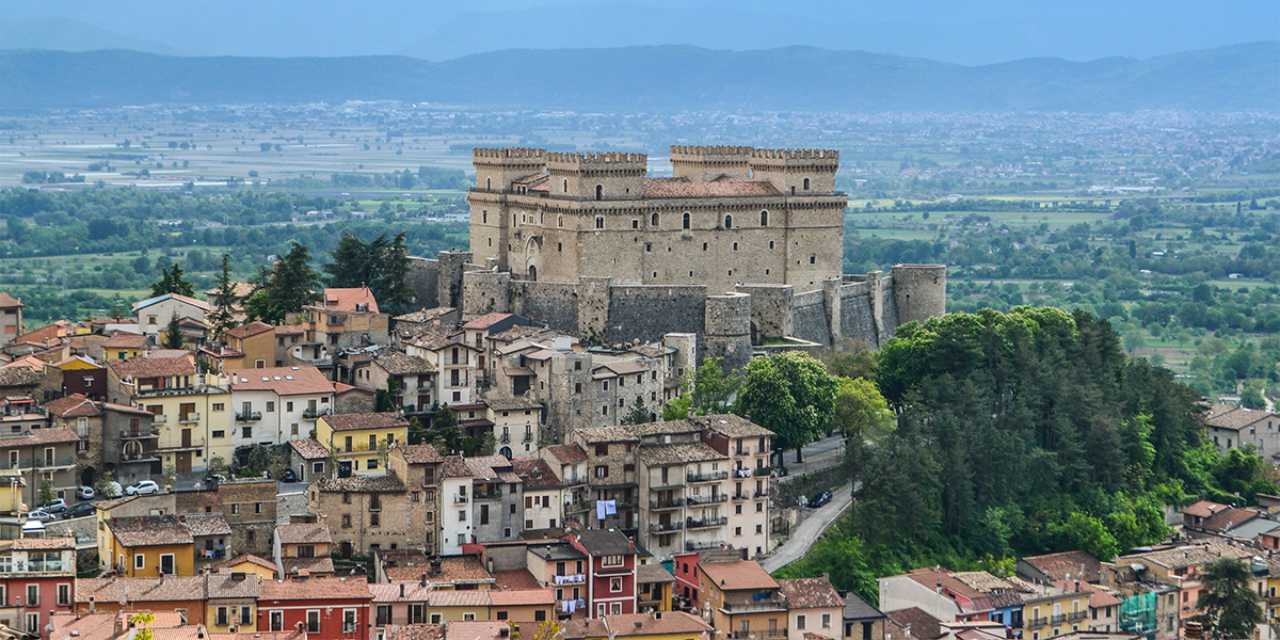
Stage
4
Friday 16
May 2025
49,2 km
Altitude gain 1200 mt
Technical Level: Advanced
Physical Effort: Medium

Celano -
Tagliacozzo
Celano - Tagliacozzo
tourist info
Host city:
Celano
Overview
Celano is located in the Sirente-Velino Regional Park, at 800 m a.s.l. It is one of the most known towns in Abruzzo, with its medieval symbol the “Piccolomini Castle”, that houses the ‘Marsica Museum of Sacred Art’ and the ‘Torlonia Collection of Antiquities from Fucino’. It was known in the past as Caput Marsorum and as the home of “Tommaso da Celano”, the first hagiographer of St. Francesco. Its position dominates the Fucino Plain, ‘the vegetable garden of Italy’. The main attractions are: the Church of Madonna delle Grazie, the Church of St. Giovanni, the Church and the Convent of St. Maria Valleverde, the Church of St. Francesco, the Church of Sant’Angelo, the Church of Madonna del Carmine, the Church of St. Rocco, the Church of the Madonnina and the ‘Fonti del Miracolo’. The Gole di Celano are one of the most beautiful canyons in Italy with an altitude ranging from 1,330 m to 500 m, characterised by rock walls eroded by time and water, 2 m wide in some places and 200 m in others.
Gastronomy
Fucino potato PGI, gnocchi with meat sauce, gnocchetti with chickpeas, tacquelozze (diamond-shaped pasta) with mutton sauce, sagna with beans, sagna with minced meat, arrosticini (sheep skewers), spaghetti alla chitarra, pappardelle with wild boar sauce, fettuccine with bacon and pecorino cheese, pasta with potatoes and beans, roast lamb with baked potatoes, pasta and chickpeas, local pecorino cheese and traditional bread. The typical desserts include: ferratelle (a kind of waffle), mostaccioli (diamond-shaped cakes glazed with chocolate), pizza dolce (sponge cake with bitter coffee and rum), savoiardi, amaretti (almond cakes).
Wine and beverage
Genziana: is a drink produced by distilling the roots of the greater gentian, a perennial herbaceous mountain plant.
Ratafia: is a liqueur made from an infusion of sour cherries and alcohol.
Nocino: is a walnut liqueur with a strong and aromatic taste.
Centerba: is an aromatic liqueur made from an infusion of aromatic and medicinal mountain herbs.
Points of interest
Piccolomini Castle: a symbol of the city and a clear sign of the medieval Celano, its construction began in 1392 with Pietro Berardi and continued with the Todeschini-Piccolomini. It has a rectangular plan with four square towers. In 1938 it was declared a National Monument and it houses the ‘Marsica Museum of Sacred Art’ and the ‘Torlonia Collection of Antiquities from Fucino’.
Tagliacozzo
Overview
A beautifully preserved medieval town in the heart of Abruzzo, Tagliacozzo is famous for its castle and the striking Rocca di Calascio, one of Italy’s most spectacular fortresses. Its historic center, with charming piazzas and palaces, is perfect for leisurely walks and admiring medieval architecture. The Santa Maria Maggiore Church, with its bell tower, is another prominent landmark not to be missed.
Gastronomy
Tagliacozzo has been influenced over the centuries by Roman and Neapolitan culinary traditions. From the classic timballo di pasta, richly seasoned, to mountain tradition soups such as gnocchetti with chickpeas and maltagliati with lentils, to pecora “ajjo cotturo” (slow-cooked sheep) and lamb roasts. The local cheese production is also excellent, with medium and long-aged cheeses, as well as cured meats, including fresh and aged sausages. Other typical local dishes include cornmeal pizza with “sfrizzojji” and pizza summa. A special mention goes to the Cloistered Nuns of the ancient Benedictine Monastery of Saints Cosma and Damiano, who prepare traditional sweets shaped like horses for boys and doves for girls during the “Blessing Festival.” They also produce jams and liqueurs. In Tagliacozzo, throughout the year, one can also enjoy traditional Christmas sweets made with walnuts and honey, filled waffles known as nevole, and, during major festivities, the so-called “zuppa inglese,” a layered dessert of sponge cake and custard creams.
Wine and beverage
Montepulciano d’Abruzzo is undoubtedly the symbolic red wine of the region. Made from the homonymous grape variety, it stands out for its deep ruby color, aromas of ripe red fruits and spices, along with a well-balanced tannic structure. It pairs perfectly with robust dishes from the Abruzzo tradition, such as arrosticini and local cured meats. Trebbiano d’Abruzzo, on the other hand, is a traditional white wine known for its freshness and simplicity. With a pale straw-yellow color, it offers scents of white-fleshed fruit and wildflowers, with a pleasantly balanced taste. It is often paired with light Mediterranean dishes, such as seafood salads and vegetable-based first courses.
Points of interest
The symbolic place of the City of Tagliacozzo, illuminated 100 days before the Giro d’Italia, is Piazza dell’Obelisco, a harmonious space enclosed by historic buildings, at the center of which stands the namesake fountain, celebrating its 200th anniversary in 2025. Among the most significant buildings are the 15th-century Palazzo del Governatorato, once owned by the Orsini family, the 16th-century Palazzo del Governatore dei Colonna, and the 17th-century Palazzo Fallace, featuring a splendid loggia. The square was originally surrounded by a perimeter portico, whose arches were closed in the 19th century to create artisan shops and commercial spaces. The Obelisk Fountain, built in 1825 in honor of Saint Anthony of Padua, is modeled after Roman Baroque fountains: above an irregular rock stands a stone obelisk, topped with a bronze cross. Before the fountain, at the center of the square stood a stone seat known locally as “pilozzo”, which served as a pillory where debtors were forced to sit with their trousers down as punishment.
The Church of San Francesco, legitimized on 20 November 1233, is one of the first sacred buildings dedicated to Saint Francis of Assisi, just seven years after his death in 1226. The architecture, in perfect Gothic lines, preserves some precious historical and artistic memories of the city. The Talia Theatre was built in the 17th century by a Duke of the Colonna family and is named after the Muse Thalia, the protector of theatrical arts, who, according to legend, also gave the city its name. It is said that she resided in the cave near the springs of the Imele River, hence Taliae Otium, meaning the retreat of Thalia.
Also noteworthy is the Palazzo Ducale Orsini Colonna, one of Italy’s most important architectural and historical monuments, whose origins date back to the 13th century and which was later expanded and enriched over the centuries. A few hundred meters from the historic center, following a shaded path accessible to all, which runs alongside the ancient mills and the course of the Imele River, one arrives at the base of the rocky cliff from which the river, praised in Virgil’s Aeneid, emerges from the depths of Mount Aurunzo.
A few kilometers from the town, along the ancient route of the Via Tiburtina Valeria, reaching the highest point of the consular road at 1200 meters on Mount Bove, we enter the Marsia mountain area (the arrival location of the 7th stage of the Giro d’Italia), named after the mythological satyr who dared to challenge the god Apollo in a musical competition with the flute. From here, the valleys and forests of the central Apennine chain (Simbruini Mountains) unfold, home to Europe’s largest beech forest. In summer, the clearings within the beech forest become the setting for major concerts, including performances by renowned musicians such as Nicola Piovani, Alessandro Quarta, and Giovanni Allevi.


